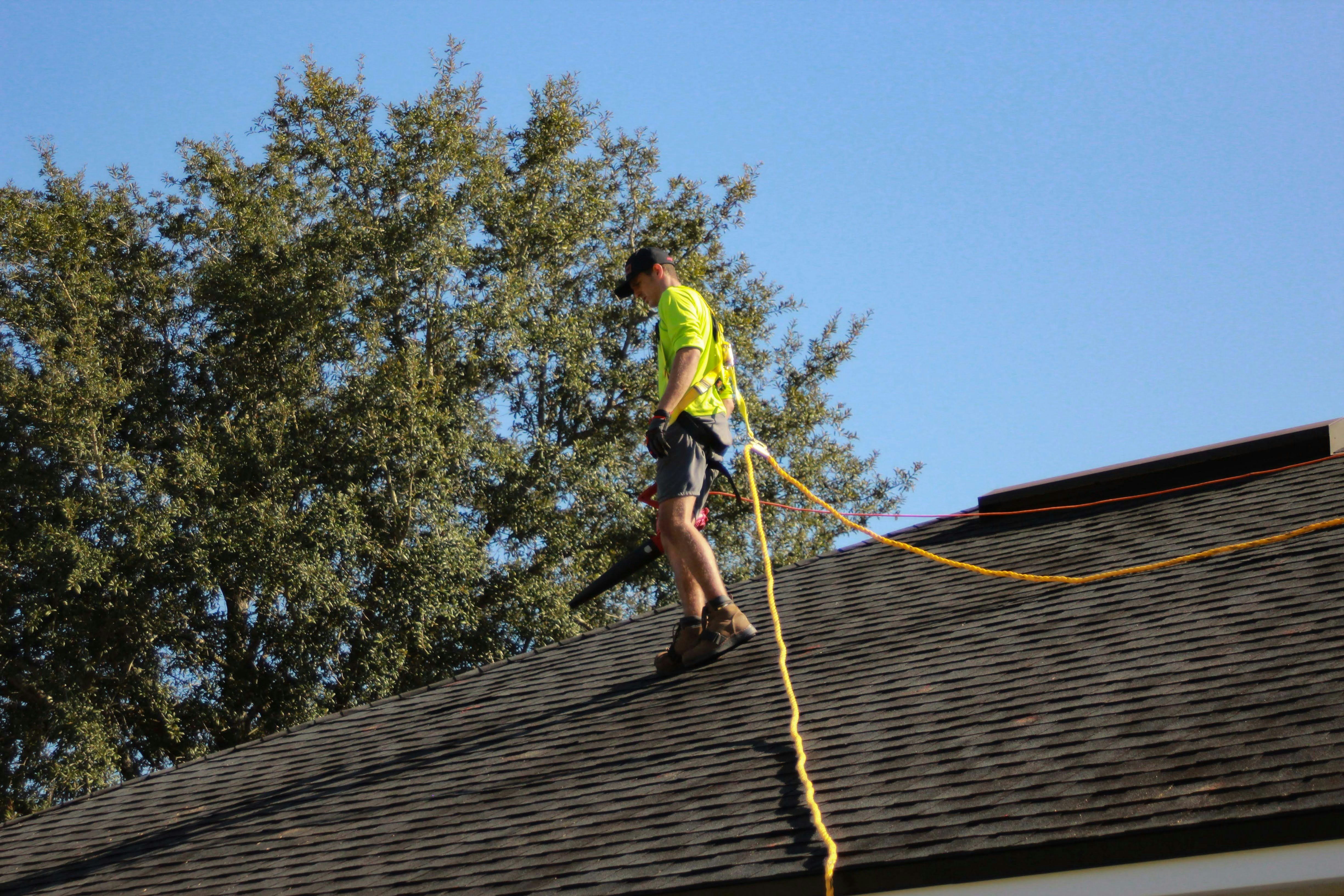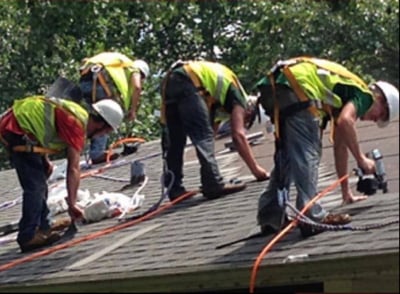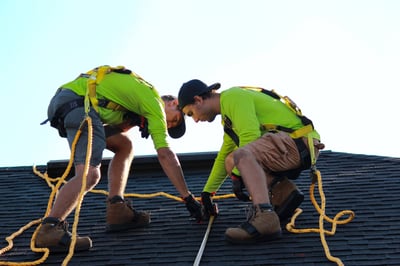
A roof offers a unique perspective—an elevated view that few ever experience. But what lies beneath the surface is far from the serene view above. Working on a roof is difficult, a test of balance and caution.
Each step carries risk. The ground below feels distant, and even the slightest misstep can lead to serious consequences. Yet, with the right approach, it doesn’t have to be dangerous. Safety is not just a precaution. It's the key to making any roofing project a success.
In this article, we'll cover 9 safety tips that will help you avoid injuring yourself or others.
1. Get Proper Certification
This is important for the pros. Safety on a roof starts with understanding the environment and the tools at your disposal. Even the most experienced workers can be at serious risk without proper training. Employers must ensure their teams have the right gear and know how to use it in every situation.
US Forklift Certification recommends rigorous safety training for all construction and roofing professionals. This isn't just about compliance. It's about creating a culture where safety is second nature. This will greatly reduce accidents and injuries.
2. Use Proper Safety Equipment
Wearing the right safety gear can mean distinguishing between a minor slip and a life-threatening fall. Roof work demands more than just sturdy shoes. It requires helmets, harnesses, and non-slip shoes. That's a full set of protective gear. Each piece serves a specific purpose, designed to keep you secure at every height.

Check all the safety gear for any damage or wear before heading up to the roof. A faulty harness or a damaged helmet can jeopardize your safety. They can turn a routine task into a dangerous situation. Proper equipment is your first line of defense.
Take the time to double-check the ladder’s angle and height. To maintain proper stability, the base should be one-quarter of the ladder’s working length away from the wall. Never rush this process—your safety depends on it.
3. Be Aware of Electrical Hazards
Roof work often brings you close to electrical lines. So, awareness is crucial. Before any job, identify all power lines. If possible, de-energize or insulate them. Never assume that a wire is safe to touch—always treat it as live until confirmed otherwise.
Using insulated tools and staying far from power lines can reduce the electrocution risk. Remember, electricity is an invisible hazard that can turn a simple mistake into a fatal accident. Your vigilance is your best protection.
4. Ensure a Clean Work Area
A cluttered roof is a dangerous roof. Loose tools, materials, and debris can become tripping hazards. This is especially true when you’re focused on your work. Maintaining a tidy workspace isn’t just about organization—it’s about safety. Every item out of place increases the risk of a slip or fall.
Use tool belts or containers to keep your tools secure and within reach. Dispose of waste materials immediately, and clear any debris from your path as you work. Keeping your workspace clean helps you move around better and lowers the risk of accidents.
5. Check Weather Conditions
Weather can turn a routine roofing job into a hazardous situation in minutes. Rain, wind, and snow can make work conditions dangerous. They can create slippery surfaces and reduce visibility. Before starting any roofing project, check the weather and plan.

If bad weather is expected, it's best to postpone the job. Working on a wet or icy roof increases the risk of falls and accidents. Look for any changes during the day, and always choose safety over meeting deadlines.
6. Secure Ladders Correctly
A secure ladder is the gateway to a safe roofing job. The most common accidents happen before workers even reach the roof, often due to improperly set ladders.

Always place your ladder on stable, level ground, and ensure it’s anchored firmly. A wobbly or poorly positioned ladder can lead to serious injury.
7. Work with a Partner
Roofing is not a task that should be done alone. Having a partner on the roof can greatly enhance safety. A partner can provide an extra set of eyes, helping to spot potential hazards that might be missed. They can also assist with tasks that need more than one person, reducing the likelihood of accidents.

In an emergency, having a partner is crucial. They can call for help, provide first aid, or assist in rooftop evacuation. Working with a partner ensures that someone is always there to support you, making the job safer and more manageable.
8. Don’t Overload the Roof
Roofs can only support a certain weight. Exceeding that limit can be dangerous. Heavy materials or too many workers can overload a roof. This may cause structural damage and a collapse. Knowing the roof's load-bearing capacity is crucial before starting any work.

Distribute weight evenly across the roof and avoid placing all materials in one spot. Use staging areas on the ground whenever possible, and move materials up as needed. This approach not only protects the roof but also enhances safety.
9. Know Your Physical Limits
Roofing is physically demanding, and it’s essential to recognize your physical limits. Overexertion can lead to mistakes and accidents, especially at heights. Take regular breaks to avoid fatigue and stay hydrated, particularly on hot days. If you start feeling tired, it’s important to pause and rest rather than push through.

Listening to your body and working at a sustainable pace will help you stay focused and in control. Doing so protects you and contributes to a safer work environment.
Wrapping Up Safety Tips
Whether you're a seasoned roofer or a DIY enthusiast, safety should always be your top priority when working on a roof. The tips are essential for anyone. If you want to avoid the risks of injury performing roofing work.
Invest in proper training, use the right equipment, and follow these guidelines. This will ensure your roofing projects are safe and successful.
Planning and prioritizing safety can mean the difference between a job well done and a disaster.
My name is Mitch, and I have over 10 years of roofing experience. I enjoy my career in the service industry because I love helping others take care of their homes and businesses. With over 10 years in the roofing industry, my success comes from my honesty and integrity during my roof inspections. I do my best to listen to the needs of my clients and strive to provide an awesome client experience.



